
The Enchanting Dunes of Sossusvlei
Discover the surreal beauty of Sossusvlei in Namibia, where towering red dunes meet stark white salt pans and ancient trees stand against a backdrop of vivid desert colors.
Sossusvlei, located in the heart of Namibia’s Namib Desert, is a mesmerizing place known for its towering red sand dunes and stark white salt pans. This otherworldly landscape is one of the most photographed places in Africa, and for good reason. The contrast of the bright orange dunes against the deep blue sky is a sight that will leave you in awe. The dunes, some of the highest in the world, offer a unique opportunity for adventurous travelers to climb and witness the stunning views from the top. The name Sossusvlei means 'dead-end marsh,' highlighting the fact that it is a drainage basin without outflows for the ephemeral Tsauchab River. When the rare rains come, the basin fills with water, creating a temporary lake that attracts wildlife such as oryx, springbok, and ostriches. During the dry season, the cracked white clay of the pan stands in striking contrast to the crimson dunes, making it an equally fascinating sight. Beyond the dunes, visitors can explore Deadvlei, a clay pan dotted with the skeletons of ancient camel thorn trees, which have been scorched black by the harsh sun over centuries. These hauntingly beautiful trees provide a stark yet beautiful contrast to the vivid colors of the desert. Sossusvlei is not just a visual treat but also a place to experience the silence and vastness of the desert, offering a sense of peace and tranquility that is hard to find elsewhere.
Local tips in Sossusvlei
- Visit early in the morning or late in the afternoon to experience the best lighting for photography and avoid the midday heat.
- Bring plenty of water and sun protection, as the desert can be extremely hot and dry.
- Stay in nearby accommodations to catch the sunrise or sunset over the dunes, as the colors are most vibrant during these times.
- Consider taking a guided tour to learn about the local flora, fauna, and geology.
The Enchanting Dunes of Sossusvlei
Sossusvlei, located in the heart of Namibia’s Namib Desert, is a mesmerizing place known for its towering red sand dunes and stark white salt pans. This otherworldly landscape is one of the most photographed places in Africa, and for good reason. The contrast of the bright orange dunes against the deep blue sky is a sight that will leave you in awe. The dunes, some of the highest in the world, offer a unique opportunity for adventurous travelers to climb and witness the stunning views from the top. The name Sossusvlei means 'dead-end marsh,' highlighting the fact that it is a drainage basin without outflows for the ephemeral Tsauchab River. When the rare rains come, the basin fills with water, creating a temporary lake that attracts wildlife such as oryx, springbok, and ostriches. During the dry season, the cracked white clay of the pan stands in striking contrast to the crimson dunes, making it an equally fascinating sight. Beyond the dunes, visitors can explore Deadvlei, a clay pan dotted with the skeletons of ancient camel thorn trees, which have been scorched black by the harsh sun over centuries. These hauntingly beautiful trees provide a stark yet beautiful contrast to the vivid colors of the desert. Sossusvlei is not just a visual treat but also a place to experience the silence and vastness of the desert, offering a sense of peace and tranquility that is hard to find elsewhere.
When is the best time to go to Sossusvlei?
Iconic landmarks you can’t miss
Namib-Naukluft National Park
Explore the breathtaking landscapes and unique ecosystems of Namib-Naukluft National Park, a majestic national park in Namibia known for its iconic dunes and diverse wildlife.

Deadvlei
Discover Deadvlei, Namibia's stunning clay pan featuring ancient trees amidst towering red dunes, a must-visit destination for nature lovers and photographers.

Sossusvlei Lodge
Discover unparalleled luxury at Sossusvlei Lodge, your perfect base for exploring the breathtaking Namib Desert and its iconic red dunes.

Namib Sky Balloon Safaris
Discover the breathtaking Namib Desert from above with Namib Sky Balloon Safaris, where adventure meets stunning natural beauty.

Deadvlei Hiking Trail
Discover the breathtaking Deadvlei Hiking Trail, where ancient trees meet stunning red dunes in Namibia's captivating desert landscape.
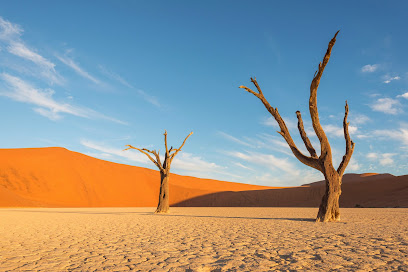
Sossus Dune Lodge
Discover the enchanting landscapes and rich biodiversity of Namibia at Sossus Dune Lodge, your gateway to the iconic Sossusvlei sand dunes.

Dune 45 Viewpoint
Discover the stunning red sand dunes and breathtaking views at Dune 45 Viewpoint in the Namib Desert, a must-see attraction for all travelers.

Dune 45 Sossusvlei
Explore Dune 45 in Sossusvlei, Namibia – a striking red sand dune offering breathtaking views and unforgettable sunrises in the heart of the Namib Desert.

Dead Valley Lodge
Experience luxury and adventure at Dead Valley Lodge, your gateway to the stunning Sesriem Sossusvlei region in Namibia's captivating desert landscape.

Kulala Desert Lodge
Experience the breathtaking beauty of Namibia at Kulala Desert Lodge, your gateway to the iconic Sossusvlei dunes and rich desert wildlife.

Big Daddy Dune
Discover the breathtaking beauty of Big Daddy Dune, Namibia's tallest dune, nestled in the stunning Sossusvlei region, perfect for hiking and photography.

Hoodia Desert Lodge
Discover the serene beauty of Hoodia Desert Lodge in Namibia, an oasis of comfort set against the breathtaking backdrop of the desert landscape.

Little Sossus Lodge
Discover the beauty of Namibia at Little Sossus Lodge, your gateway to the stunning landscapes of Sossusvlei and beyond.

andBeyond Sossusvlei Desert Lodge
Experience breathtaking luxury at andBeyond Sossusvlei Desert Lodge, where stunning desert views and exceptional hospitality await in Namib-Naukluft Park.

Little Kulala
Discover the luxury of Little Kulala, the perfect lodge for exploring the stunning Sossusvlei dunes and the Namib Desert's breathtaking beauty.

Unmissable attractions to see
Namib Sky Balloon Safaris
Discover the breathtaking beauty of the Namib Desert from above with an unforgettable hot air balloon safari.

Deadvlei Hiking Trail
Experience the surreal beauty of Deadvlei Hiking Trail in Sossusvlei, where ancient trees meet towering sand dunes in a breathtaking landscape.

Viewpoint
Discover the stunning beauty of the Viewpoint, a scenic tourist attraction offering breathtaking views and a tranquil atmosphere for all visitors.

Fairy Circles Sossusvlei
Discover the mysterious Fairy Circles in Sossusvlei, a natural phenomenon surrounded by stunning desert landscapes in Namibia.
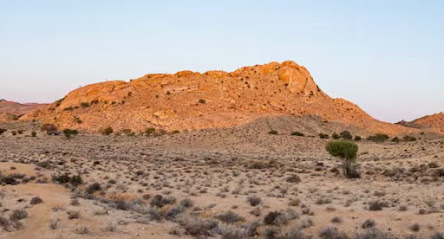
Essential places to dine
Sossusvlei Lodge
Experience luxury and adventure at Sossusvlei Lodge, your gateway to Namibia's breathtaking deserts and iconic landscapes.

Sossusvlei
Explore Sossusvlei's majestic red dunes and seasonal lake—a breathtaking natural wonder in Namibia's Namib Desert.

Sossus Dune Lodge
Experience luxury amidst Namibia's majestic landscapes at Sossus Dune Lodge near Sossusvlei.

Desert Homestead Lodge
Discover tranquility at Desert Homestead Lodge, your gateway to Namibia's breathtaking desert landscapes and unforgettable adventures.

Desert Hills Lodge
Experience serene luxury at Desert Hills Lodge amidst the breathtaking landscapes of the Namib Desert near Sesriem.

Agama Lodge
Experience exceptional dining and warm hospitality at Agama Lodge, your gateway to exploring Namibia's stunning landscapes.

Dead Valley Lodge
Discover unparalleled tranquility at Dead Valley Lodge, your gateway to exploring Namibia's stunning desert landscapes.

Kulala Desert Lodge
Experience luxury amidst the stunning landscapes of Namibia at Kulala Desert Lodge - your gateway to adventure in Sossusvlei.

Hoodia Desert Lodge
Discover serenity at Hoodia Desert Lodge amidst Namibia's breathtaking landscapes, your gateway to adventure in Sesriem.

andBeyond Sossusvlei Desert Lodge
Discover unparalleled luxury amidst Namibia's breathtaking landscapes at andBeyond Sossusvlei Desert Lodge.

Little Sossus Lodge
Experience serene comfort and adventure at Little Sossus Lodge in breathtaking Sossusvlei, Namibia - your gateway to desert wonders.

Little Kulala
Experience unparalleled luxury at Little Kulala Lodge in Namibia’s breathtaking Sossusvlei region—where nature meets elegance.
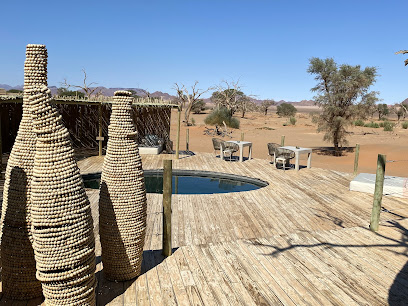
Namib Outpost
Discover tranquility at Namib Outpost Lodge in Sesriem, where comfort meets adventure amid stunning Namib Desert landscapes.

At Kronenhof Lodge (Gate)
Experience the serene beauty of Sossusvlei at Kronenhof Lodge, where luxury meets nature in Namibia's stunning desert landscape.

Kwessi Dunes
Experience luxury amidst stunning dunes at Kwessi Dunes in Namibia's breathtaking NamibRand Nature Reserve.

Markets, malls and hidden boutiques
Deadvlei
Explore the surreal beauty of Deadvlei, where ancient trees meet striking red dunes in Namibia's breathtaking desert landscape.

Canyon Roadhouse, Gondwana Collection Namibia
Experience the rugged beauty of Namibia at Canyon Roadhouse, where rustic charm meets modern comfort amidst stunning desert landscapes.
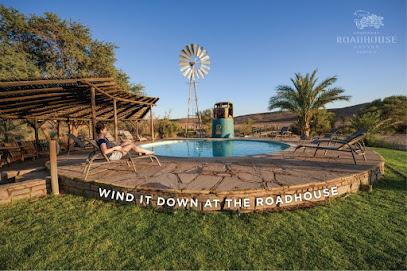
Kalahari Anib Lodge, Gondwana Collection Namibia
Immerse yourself in the natural beauty and adventure at Kalahari Anib Lodge, a tranquil retreat in Namibia's stunning Kalahari Desert.

Namibia Craft Centre
Discover the rich tapestry of Namibian culture at the Namibia Craft Centre, where authentic crafts and local flavors await.
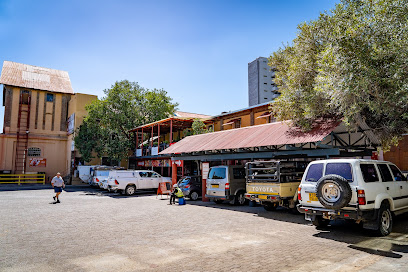
Namib Desert Lodge, Gondwana Collection Namibia
Discover the serene beauty of the Namib Desert at the Namib Desert Lodge, where adventure meets luxury in a stunning natural setting.
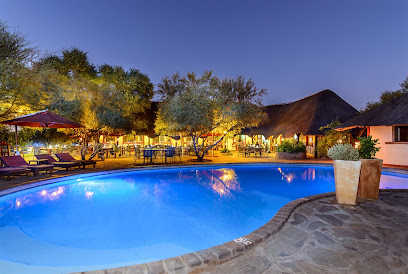
McGregor's Bakery
Discover McGregor's Bakery in Solitaire, a delightful stop for freshly baked goods and authentic Namibian flavors amidst breathtaking landscapes.

Strand Hotel
Discover unparalleled luxury and local charm at Strand Hotel, your perfect Swakopmund getaway with stunning ocean views and top-notch amenities.

Desert Quiver Camp
Discover the serene beauty of the Namib Desert at Desert Quiver Camp, a perfect blend of nature and luxury.
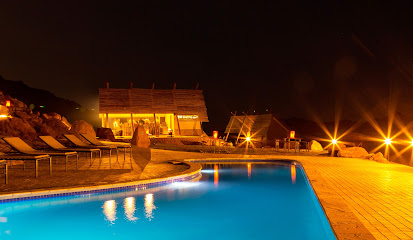
Desert Camp
Discover the allure of Desert Camp in the Namib Desert, where stunning landscapes and luxurious chalets create unforgettable experiences for every traveler.

Namib Sky Balloon Safaris
Soar above the stunning Namib Desert with Namib Sky Balloon Safaris for an unforgettable aerial adventure amidst nature's beauty.

Sossus Dune Lodge
Experience the beauty of the Namib Desert at Sossus Dune Lodge, where luxury meets nature in a breathtaking landscape.

Maltahöhe Hotel
Experience comfort and local charm at Maltahöhe Hotel in Namibia - your ideal base for exploring breathtaking landscapes and vibrant culture.

Tsauchab River Camp
Experience the tranquil beauty of Tsauchab River Camp, a serene oasis in Namibia, perfect for adventurers and nature lovers alike.

The Desert Grace, Gondwana Collection Namibia
Experience the beauty and tranquility of the Namib Desert at Desert Grace, a stunning lodge offering comfort and adventure in Namibia.

Canyon Farm Yard
Experience the tranquility of nature and the delight of homemade treats at Canyon Farm Yard, Keetmanshoop's hidden gem for campers and coffee lovers.
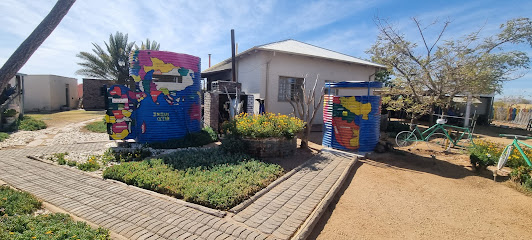
Essential bars & hidden hideouts
Joe's Beerhouse
Discover the vibrant culture and delicious flavors of Namibia at Joe's Beerhouse, a must-visit bar and restaurant in Windhoek.

Andy's Pub & Restaurant
Experience the vibrant atmosphere and authentic flavors at Andy's Pub & Restaurant in Windhoek, where local culture meets great cuisine.

Tiger Reef Beach Bar & Grill
Experience the vibrant atmosphere and delicious grilled cuisine at Tiger Reef Beach Bar & Grill, a coastal gem in Swakopmund.

Bar Zonder Naam
Discover the essence of fine wines at Bar Zonder Naam, Swakopmund's cozy wine bar, perfect for relaxation and culinary delights.

Sossus Dune Lodge
Discover the breathtaking beauty of Sossus Dune Lodge, where luxury meets the wild heart of the Namib Desert, offering adventure and tranquility.

Desert Homestead Lodge
Discover the enchanting Desert Homestead Lodge, your gateway to Namibia's stunning landscapes and rich culture, perfect for adventurers and relaxation seekers alike.

Agama Lodge
Discover the beauty of Namibia at Agama Lodge, a perfect blend of comfort and adventure in the heart of the desert.

Kulala Desert Lodge
Experience luxury and adventure at Kulala Desert Lodge, your gateway to the breathtaking landscapes of Namibia's Sossusvlei region.

andBeyond Sossusvlei Desert Lodge
Discover luxury in the heart of the Namib Desert at andBeyond Sossusvlei Desert Lodge, where stunning views meet unparalleled comfort.

Little Kulala
Discover luxury and adventure at Little Kulala Lodge in Namibia's Sossusvlei, where stunning landscapes meet exceptional service and comfort.

Namib Outpost
Experience the enchanting beauty of the Namib Desert at Namib Outpost, a perfect lodge for adventure and tranquility.

Zebra River Lodge
Discover tranquility at Zebra River Lodge, where nature meets comfort in the heart of Namibia's stunning landscapes.

Viewpoint
Experience breathtaking views and serene nature at the Viewpoint, a must-visit tourist attraction that captures the essence of the landscape.

Café Van Der Lee
Discover a culinary oasis at Café Van Der Lee in Solitaire, offering delicious local cuisine and a cozy atmosphere amidst Namibia's stunning landscapes.

Sossus Oasis
Discover Sossus Oasis, your essential stop for fuel, convenience, and takeout meals in the stunning Namib Desert.

Local Phrases about Sossusvlei
-
- HelloHallo
[ha-lo] - GoodbyeTotsiens
[toh-see-ens] - YesJa
[yah] - NoNee
[nee] - Please/You're welcomeAsseblief
[ah-suh-bleef] - Thank youDankie
[dahn-kee] - Excuse me/SorryJammer
[yah-mer] - How are you?Hoe gaan dit met jou?
[hoo gahn dit met yoh] - Fine. And you?Goed. En jy?
[kood. en yay] - Do you speak English?Praat jy Engels?
[praht yay eng-uhls] - I don't understandEk verstaan nie
[ek verst-ahn nee]
- HelloHallo
-
- I'd like to see the menu, pleaseEk wil asseblief die spyskaart sien
[ek vil ah-suh-bleef dee spays-kart seen] - I don't eat meatEk eet nie vleis nie
[ek ayt nee fleys nee] - Cheers!Gesondheid!
[guh-sund-hayt] - I would like to pay, pleaseEk wil asseblief betaal
[ek vil ah-suh-bleef buh-tahl]
- I'd like to see the menu, pleaseEk wil asseblief die spyskaart sien
-
- Help!Help!
[help] - Go away!Gaan weg!
[gahn vekh] - Call the Police!Bel die Polisie!
[bel dee poh-li-see] - Call a doctor!Bel 'n dokter!
[bel uhn dok-tur] - I'm lostEk is verlore
[ek is fehr-loh-ruh] - I'm illEk is siek
[ek is seek]
- Help!Help!
-
- I'd like to buy...Ek wil koop...
[ek vil kohp] - I'm just lookingEk kyk net
[ek kayk neht] - How much is it?Hoeveel kos dit?
[hoo-feyl kohs dit] - That's too expensiveDit is te duur
[dit is tuh duh-er] - Can you lower the price?Kan jy die prys afslaan?
[kahn yay dee preys af-slaan]
- I'd like to buy...Ek wil koop...
-
- What time is it?Hoe laat is dit?
[hoo laht is dit] - It's one o'clockDit is een uur
[dit is ayn oor] - Half past (10)Half tien
[hahlf teen] - MorningOggend
[oh-khent] - AfternoonMiddag
[mid-dahkh] - EveningAand
[ahnt] - YesterdayGister
[gi-stur] - TodayVandag
[fuhn-dahkh] - TomorrowMôre
[moh-ruh] - 1Een
[ayn] - 2Twee
[twee] - 3Drie
[dree] - 4Vier
[feer] - 5Vyf
[fayf] - 6Ses
[sehs] - 7Sewe
[seh-vuh] - 8Agt
[ahgt] - 9Nege
[nay-guh] - 10Tien
[teen]
- What time is it?Hoe laat is dit?
-
- Where's a/the...?Waar is 'n/die...?
[vahr is uhn/dee] - What's the address?Wat is die adres?
[vaht is dee uh-drehs] - Can you show me (on the map)?Kan jy my wys (op die kaart)?
[kahn yay may vis (ohp dee kart)] - When's the next (bus)?Wanneer is die volgende (bus)?
[vuhn-er is dee fuhl-guhn-duh (buhs)] - A ticket (to ....)'n Kaartjie (na ....)
[uhn kart-kee (nah)]
- Where's a/the...?Waar is 'n/die...?
History of Sossusvlei
-
The Namib Desert, one of the oldest deserts in the world, began forming around 55 million years ago. The geological processes that created the vast sand dunes of Sossusvlei were set in motion by the shifting of tectonic plates and the gradual erosion of ancient mountains. The desert's unique climate and wind patterns have sculpted the distinctive red dunes, which are among the tallest in the world.
-
The San people, also known as the Bushmen, are the earliest known inhabitants of the Namib Desert. They have lived in the region for thousands of years, developing a deep connection to the land and its resources. The San's rock art, depicting their daily lives and spiritual beliefs, can still be found in the area, offering a glimpse into their rich cultural heritage.
-
European explorers began venturing into the Namib Desert in the 18th and 19th centuries. These expeditions, often motivated by the search for resources and strategic routes, faced harsh conditions and limited success. Notable explorers such as Sir James Edward Alexander documented their journeys, contributing to the Western world's understanding of this remote and challenging environment.
-
In the late 19th century, Namibia became a German colony known as German South West Africa. The colonial period brought significant changes to the region, including the establishment of infrastructure and settlements. However, it also led to conflicts and hardships for the indigenous populations, including the Herero and Namaqua people, who resisted German rule in a series of brutal uprisings.
-
In the 20th century, Sossusvlei began to gain recognition as a unique and valuable natural wonder. Efforts to preserve the area led to the establishment of the Namib-Naukluft National Park in 1979. Today, Sossusvlei is a major tourist destination, attracting visitors from around the globe who come to marvel at its striking landscapes and experience the tranquility of the desert.
-
The Namib Desert is home to a variety of unique flora and fauna adapted to its harsh conditions. Sossusvlei's ephemeral salt and clay pans occasionally fill with water during rare rainfalls, supporting a burst of life. The desert's biodiversity includes species such as the oryx, springbok, and the endemic Namib Desert beetle. Conservation efforts continue to protect this fragile ecosystem.
Sossusvlei Essentials
-
Sossusvlei is located in the Namib-Naukluft National Park in Namibia. The nearest international airport is Hosea Kutako International Airport in Windhoek, approximately 330 kilometers away. From Windhoek, you can rent a car and drive to Sossusvlei, which takes about 4 to 5 hours. Alternatively, you can book a guided tour or a shuttle service that offers transportation from Windhoek to Sossusvlei. Some visitors also opt for charter flights to nearby airstrips for a quicker but more expensive option.
-
Once in Sossusvlei, the best way to get around is by renting a 4x4 vehicle, as the terrain can be challenging. There are no public transport options within the park, so self-driving or guided tours are your main choices. Some lodges offer guided excursions, which can be a convenient way to explore the area. If you are driving, ensure your vehicle is equipped with GPS and carry extra fuel and water.
-
The official currency in Namibia is the Namibian Dollar (NAD), which is pegged to the South African Rand (ZAR). Credit cards are widely accepted in lodges and larger establishments, but it is advisable to carry cash, especially for smaller transactions or in remote areas. ATMs are available in Windhoek and other larger towns, but not in Sossusvlei, so withdraw sufficient cash before heading to the park.
-
Sossusvlei is generally safe for tourists, but standard travel precautions should be taken. Be vigilant about your belongings and avoid isolated areas at night. Petty crime is more common in urban areas like Windhoek, so it's best to be cautious in cities. In the park, wildlife can pose risks; always maintain a safe distance and follow guidelines from park authorities.
-
In case of an emergency, dial 10111 for police assistance and 10177 for medical emergencies. Lodges and campsites usually have first aid kits and can assist in contacting emergency services. It is highly recommended to have travel insurance that covers medical emergencies and evacuation. For minor health issues, carry a basic first aid kit and any necessary medications.
-
Fashion: Do wear light, breathable clothing and sturdy shoes. Don't forget a hat and sunscreen. Religion: Do respect local customs, although Sossusvlei is not particularly religious. Public Transport: Do use guided tours for convenience as there's no public transport. Greetings: Do greet people with a handshake and a smile. Eating & Drinking: Do try local cuisine at lodges. Don't waste water, as it is a scarce resource in the desert.
-
To experience Sossusvlei like a local, wake up early to catch the sunrise over the dunes. This is also the best time for photography. Visit Deadvlei, a clay pan dotted with ancient, dead camelthorn trees, which offers a surreal landscape. Engage with local guides who can share fascinating insights about the geology, flora, and fauna of the area. Finally, stay hydrated and carry plenty of water, as the desert climate can be extremely dry and hot.
Trending Landmarks in Sossusvlei
Nearby Cities to Sossusvlei
-
Things To Do in Walvis Bay
-
Things To Do in Swakopmund
-
Things To Do in Mariental
-
Things To Do in Windhoek
-
Things To Do in Usakos
-
Things To Do in Karibib
-
Things To Do in Okahandja
-
Things To Do in Keetmanshoop
-
Things To Do in Omaruru
-
Things To Do in Otjiwarongo
-
Things To Do in Outjo
-
Things To Do in Etosha Village
-
Things To Do in Tsumeb
-
Things To Do in Oshakati
-
Things To Do in Ongwediva











